The Museum & Learning Center at the New York Fed offers guided tours to school groups and the general public. Through a crafted storytelling experience, visitors learn about the roles and responsibilities of the Federal Reserve System.
As Creative Director, I managed the $1 million capital project to modernize the 21,500+ square foot space for 100,000+ visitors. In this role, I oversaw every aspect of project management from conception to launch to operations. The project scope included a modular floor plan, 30+ new exhibits (content/design/fabrication), an integrated AV system, an updated digital ticketing platform, a story-driven tour script, event programming, and a high-touch engagement model to deepen partnerships with target audiences.
Game Plan
- Transform a 15th-century fortress into a friendly space
- Engage a range of diverse audiences (100,000+ visitors)
- Stimulate student curiosity about STEM and economics
Visitor Experience
- Educational storytelling crafted for unique audiences
- Targeted and inclusive student programming
- High-touch engagement balanced with high-level security
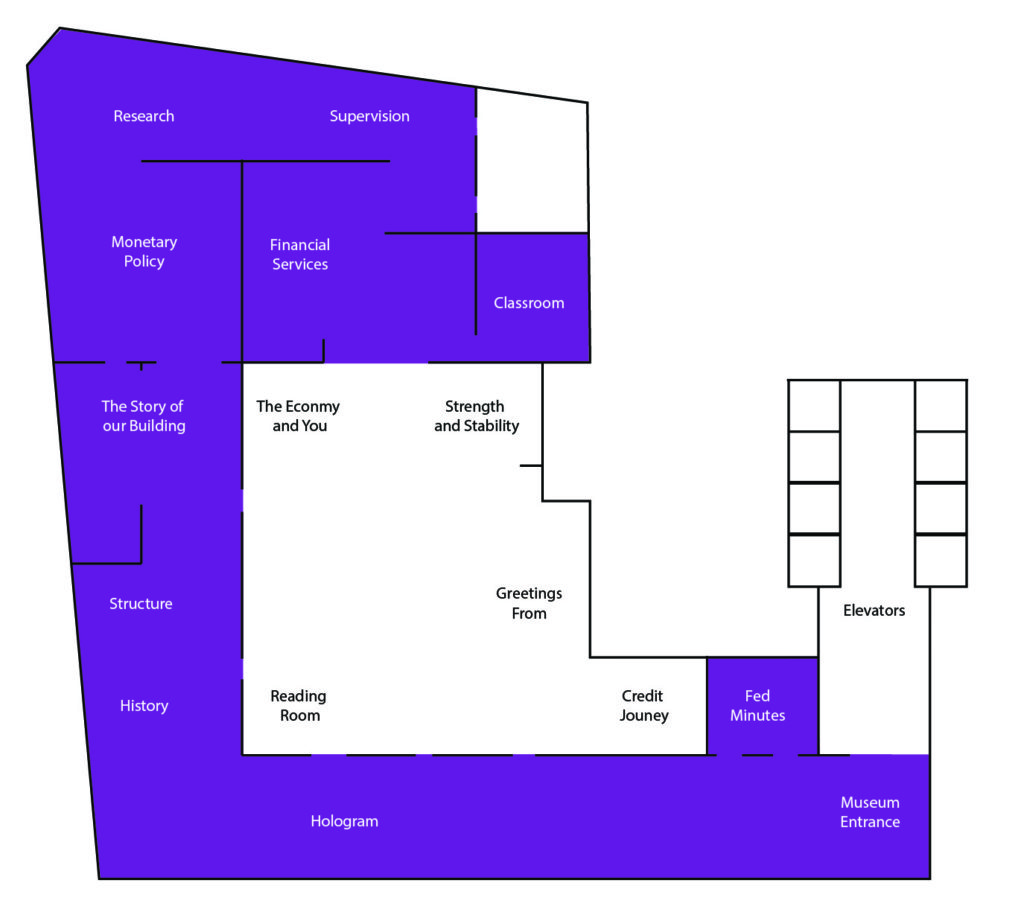
Background
Located in Manhattan’s Financial District, the New York Fed building is designated as a National Historic Landmark. Completed in 1924, the building was designed to project strength and stability for the nation’s newly formed central bank. The architectural firm of York & Sawyer was inspired by the facade, stone, and ironwork of 15th Century Florentine Palazzi.
The exhibit space originally opened to the public in 1924 and served as a location to purchase treasury securities. The 20,000+ square foot hall later functioned as an office before it was transformed into a museum in the late 1990s.
In 2013, the museum received a capital budget to modernize the exhibit experience. The casual tours program was transformed into the Museum and Learning Center, a high-touch program developed to engage, educate, and empower a broad range of visitors.

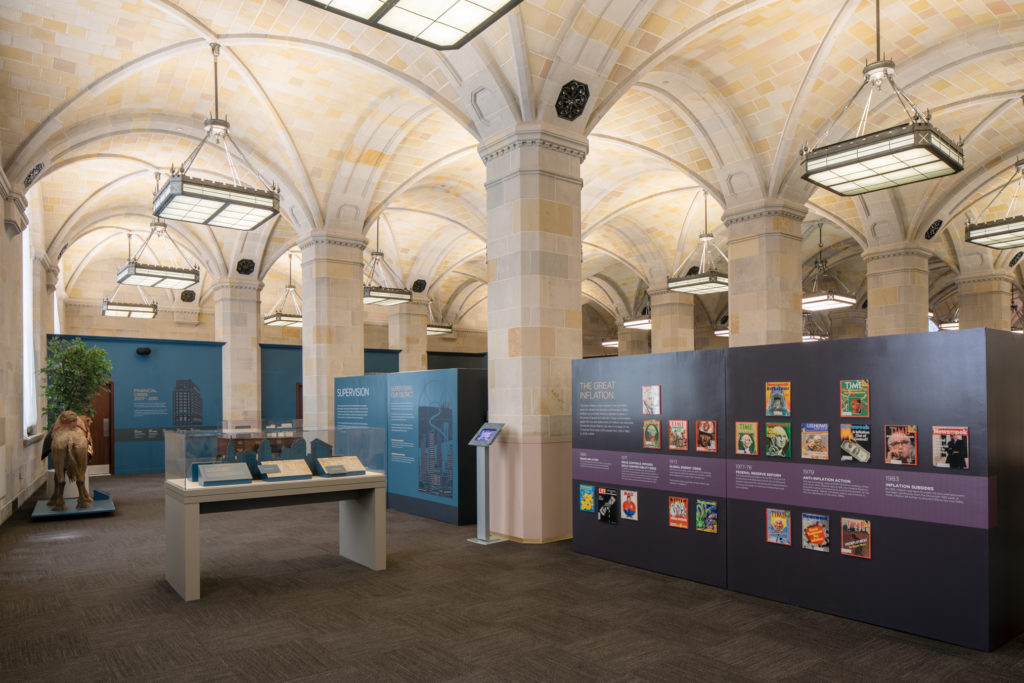
High-touch Entrance
A key element of the visitor experience was to create a friendly, welcoming encounter with an approachable introduction to economics. This challenge was unique with the fortress design, high-level security, and business operations.
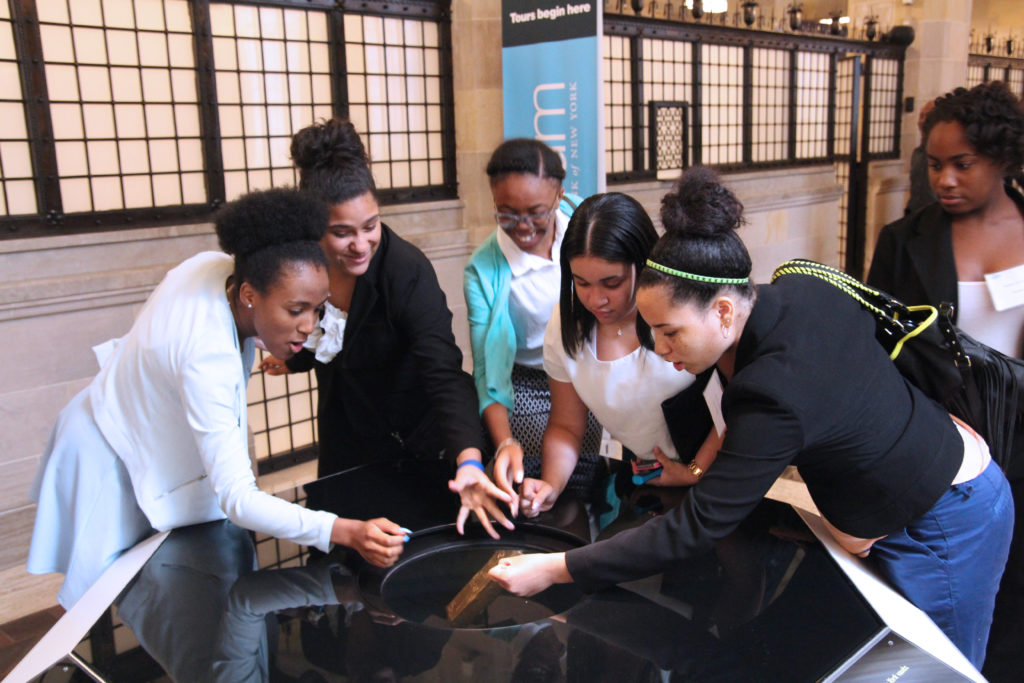
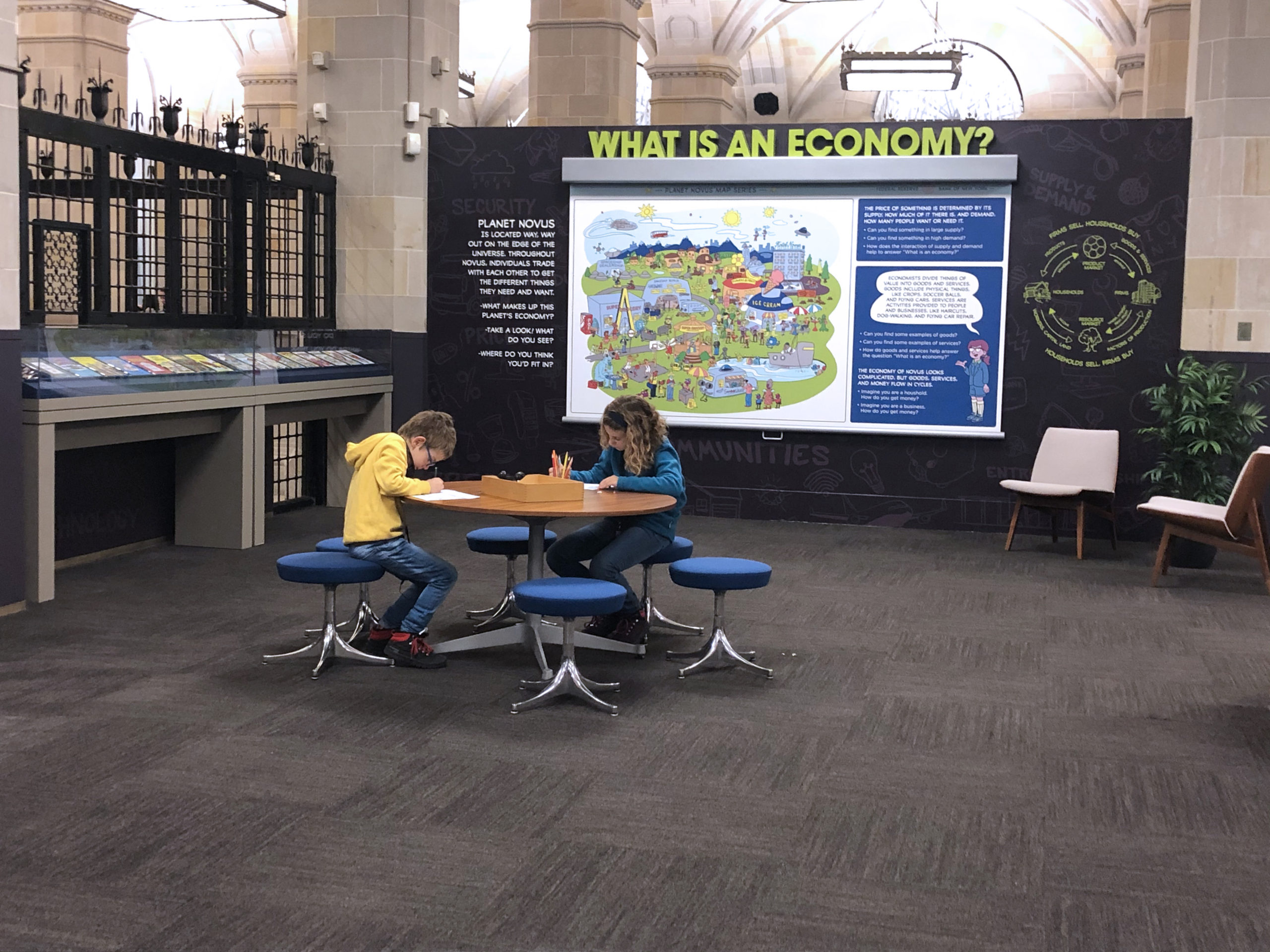
Flexible Exhibit Path
Early in the process, the design team identified the need for flexibility in the physical layout. The existing space contains limestone columns every 13 feet, interlaced with custom ironwork, and teller windows. It was critical that the exhibit infrastructure complemented these features while accommodating the evolving tour path.
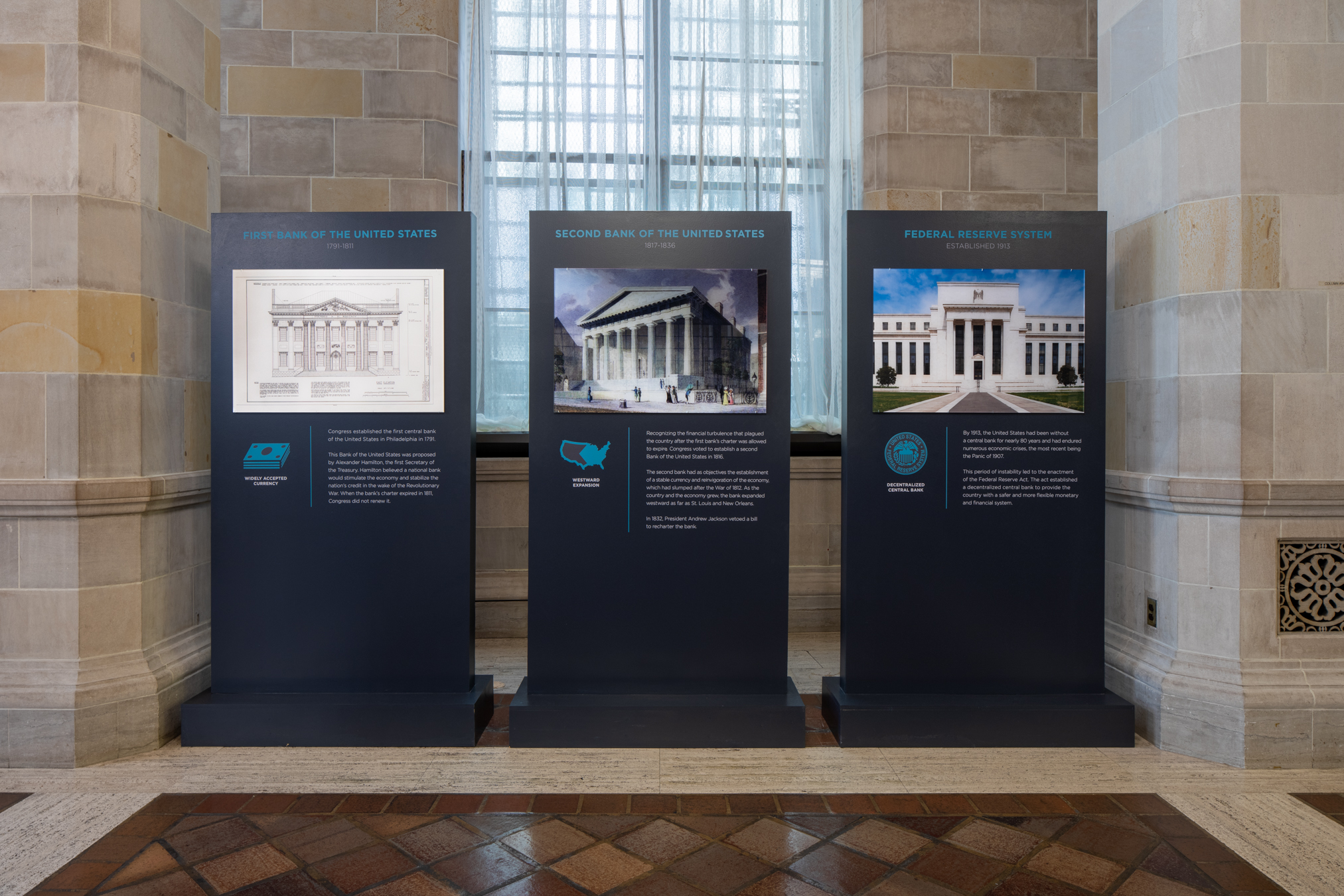
Extended Sight Lines
The layout of the Introduction Hall was designed to highlight the building’s sight-lines.
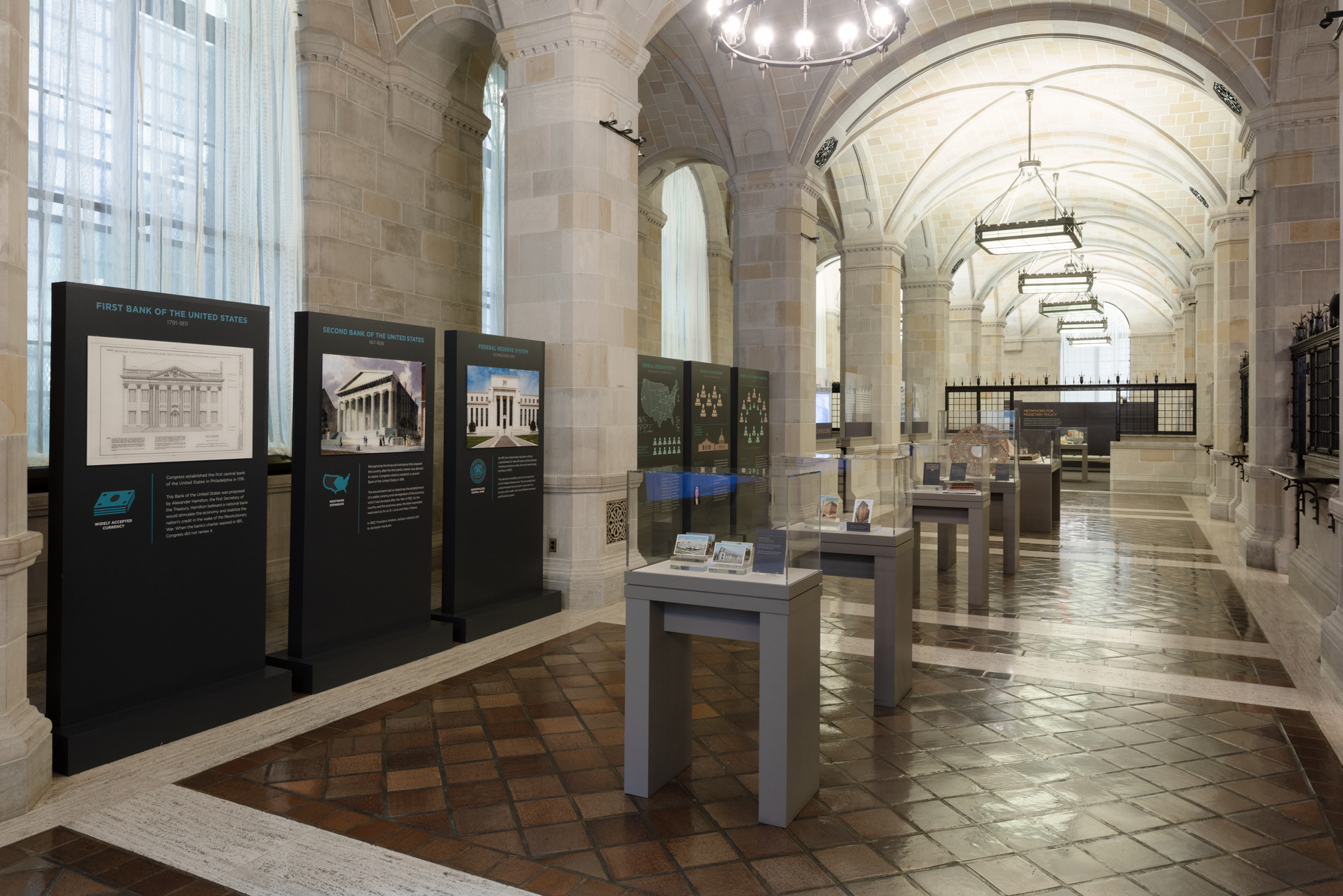
Modular Exhibit Walls
To complement the existing architecture and need for flexibility, a series of modular walls were constructed. Each unit is built around a scaffolding unit on cartwheels and stands 7 ft tall to clear the existing ironwork. An internal mechanical jack system allows for leveling on uneven floors. The walls scale in intimate proportion to the visitor, while not distracting from the Guastavino ceiling.

Artifact Fabrication
Custom vitrines showcase artifacts that compliment the tour. Items were selected based on careful research and aligned to national education standards. Due to humidity, from the building’s lime and sandstone facade, artifacts had to be reproduced to withstand a wide fluctuation in temperature.
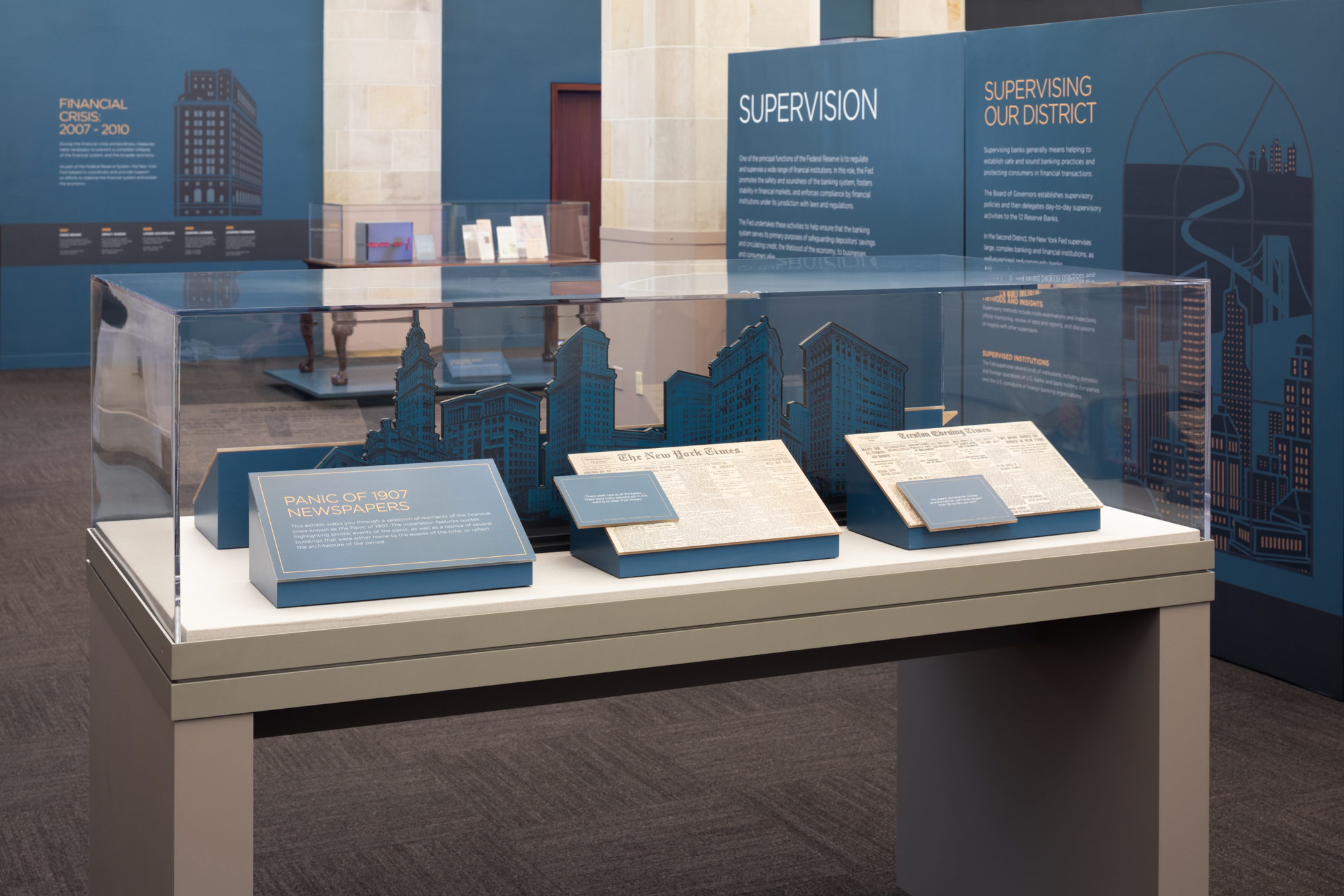
Before the modernization, the museum featured two large, bulky items displaying cash. Visitor studies revealed significant engagement with these objects and now serve as cornerstone learning tools on the tour.

Education and Events
Each day, the Museum hosts students, teachers, community-based organizations, and the general public on guided tours. Every visit offers a high-touch guided tour through the space. Additional programming is offered around student activities, teacher professional development, and community development events.
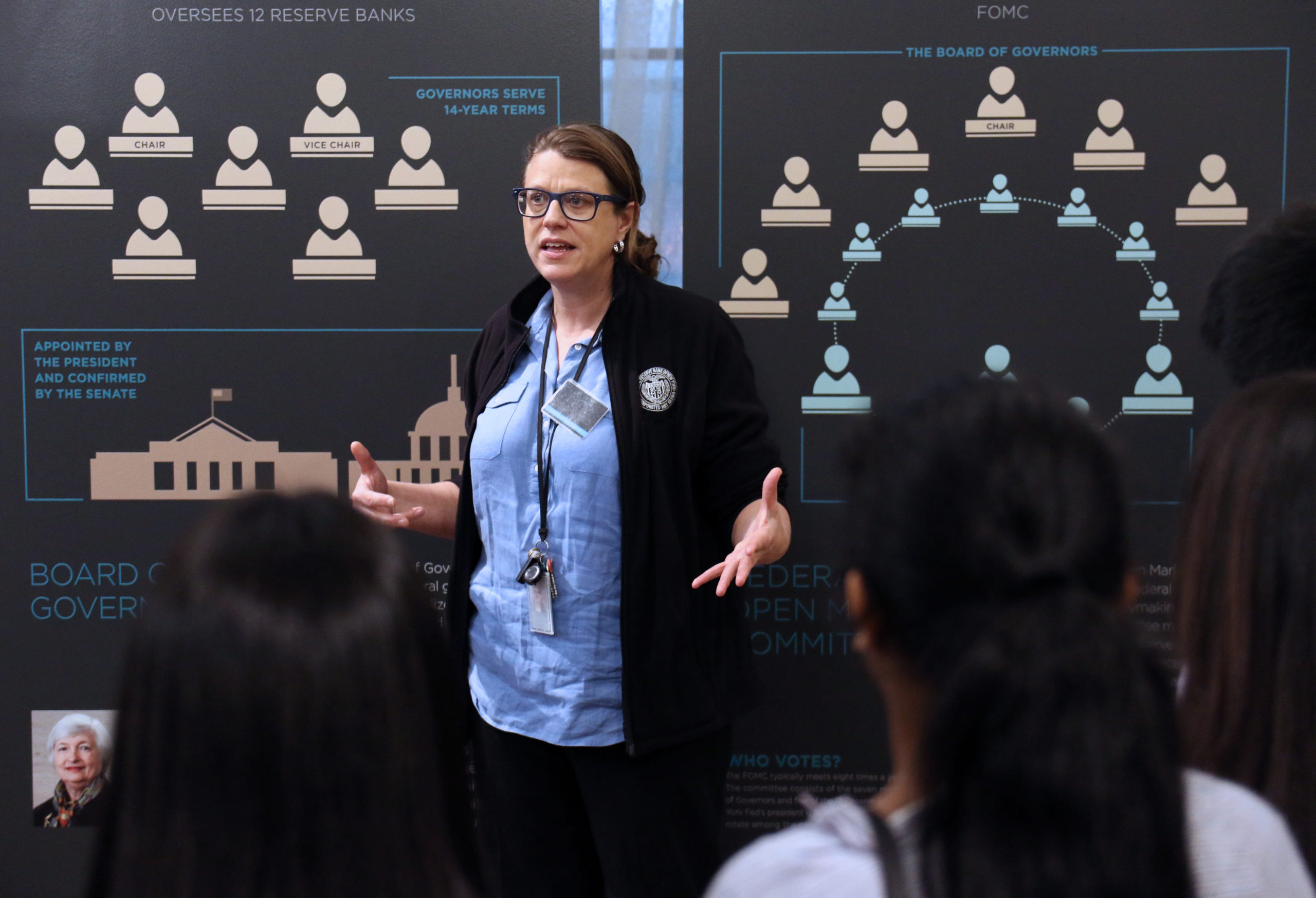
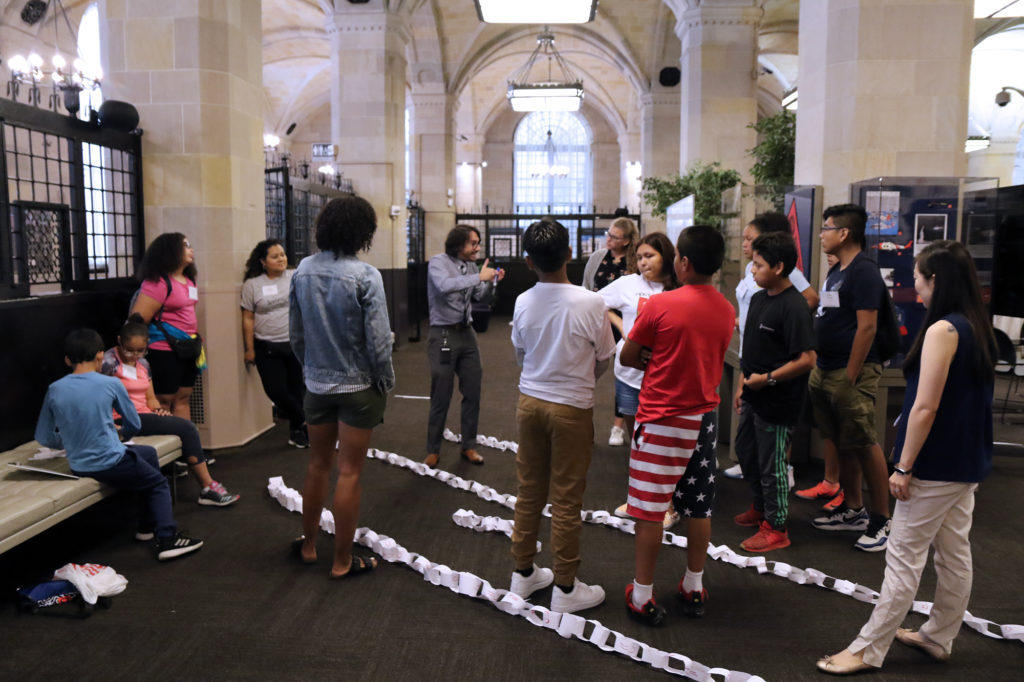
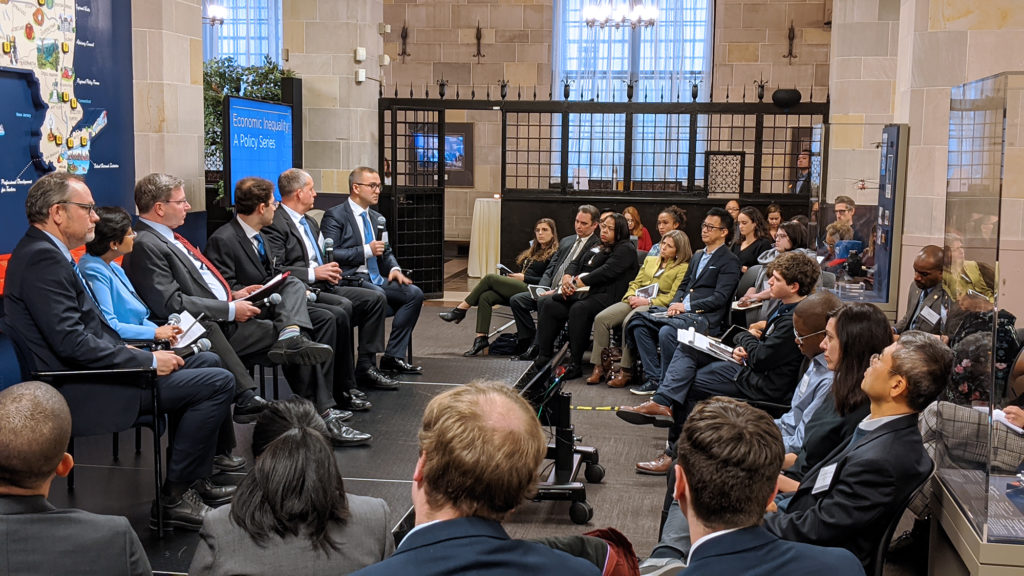
Disclaimer
The views expressed in this post are those of the author(s) and do not reflect the position of the Federal Reserve System. Any errors or omissions are the responsibility of the author(s).